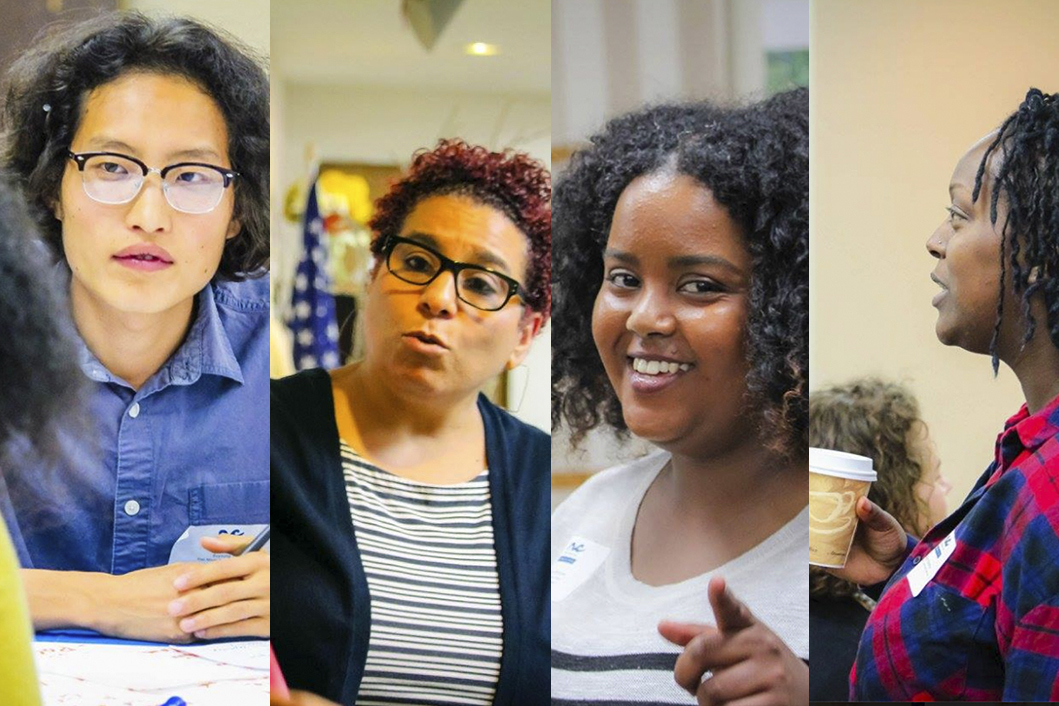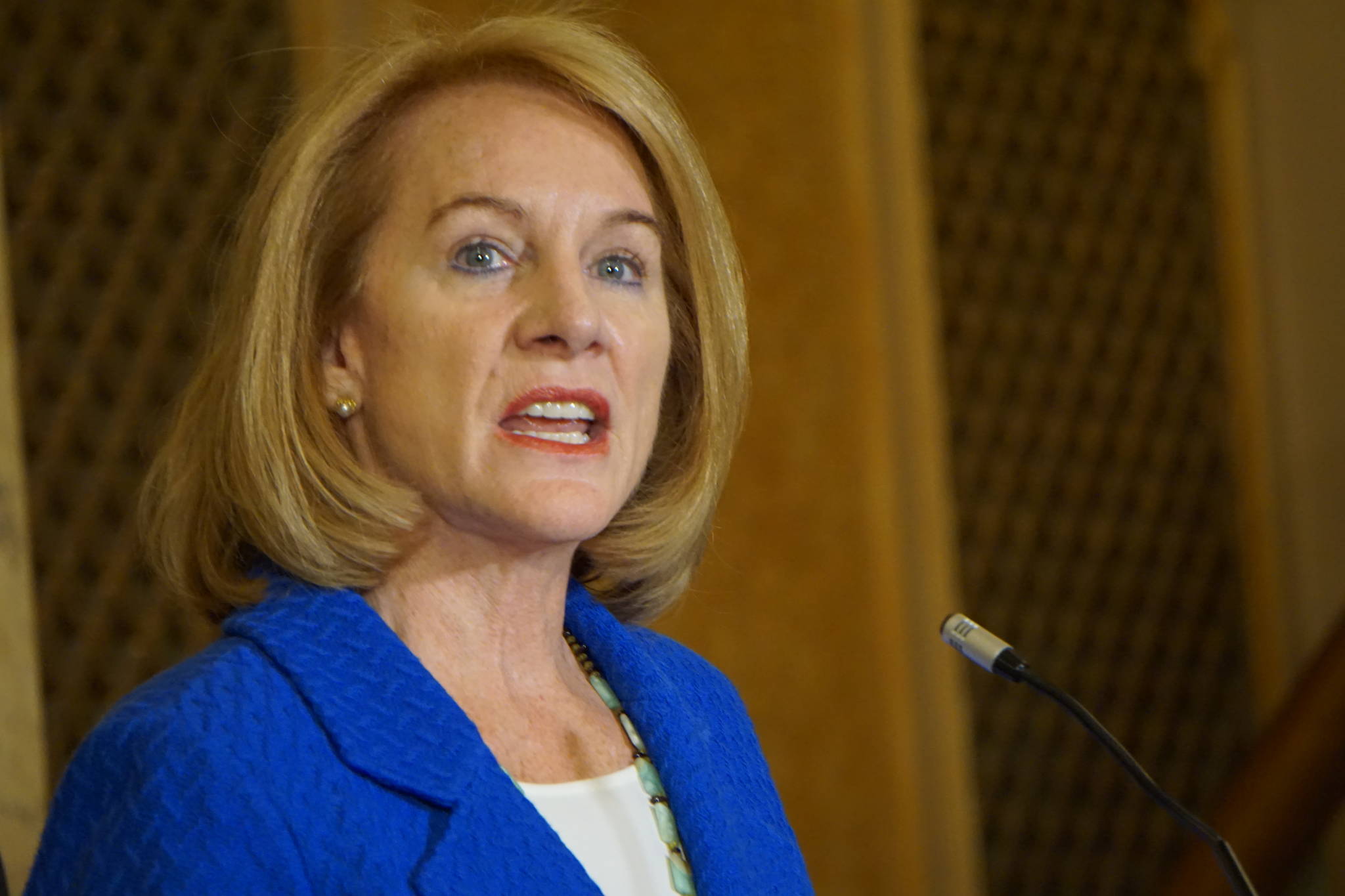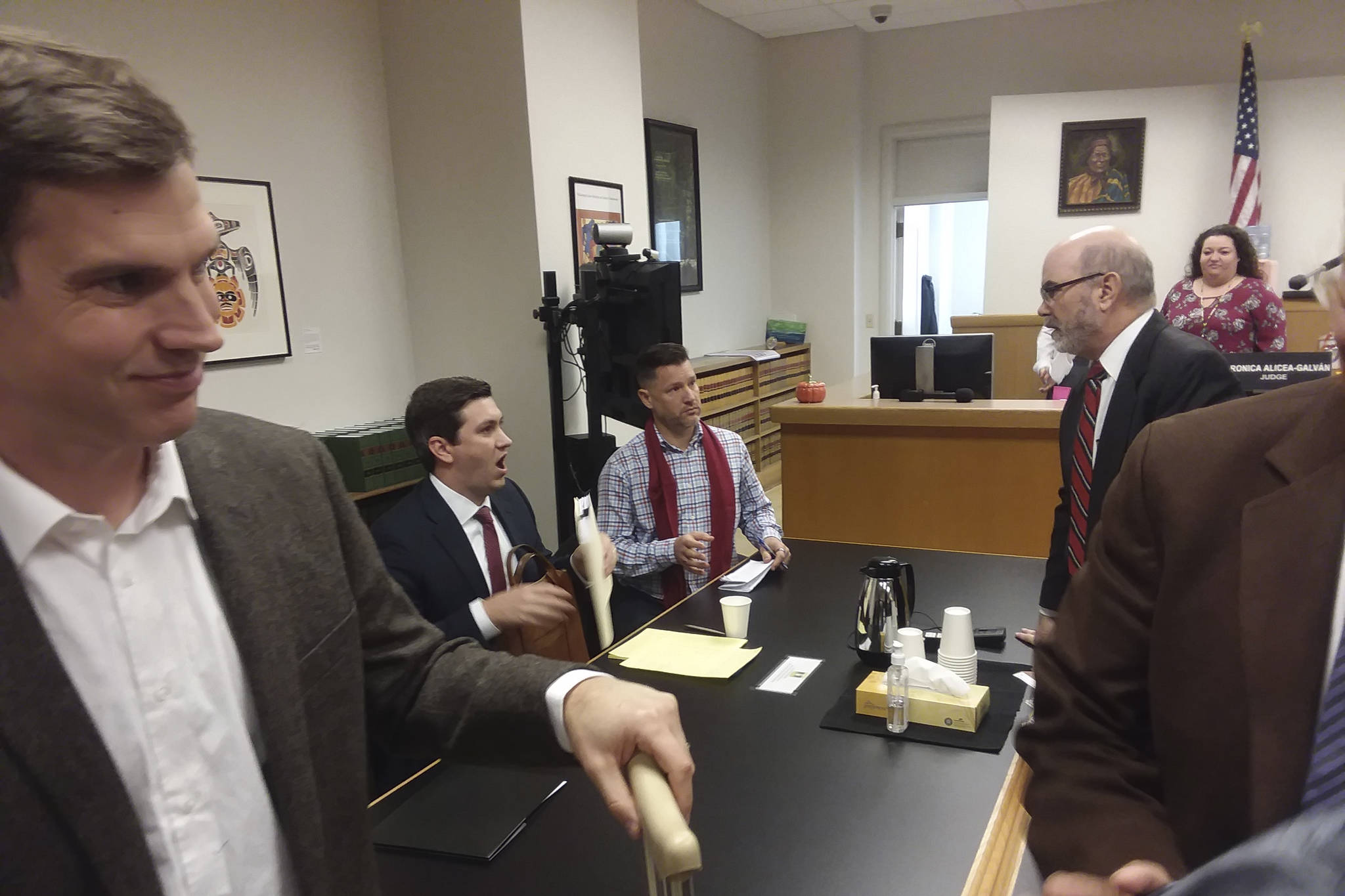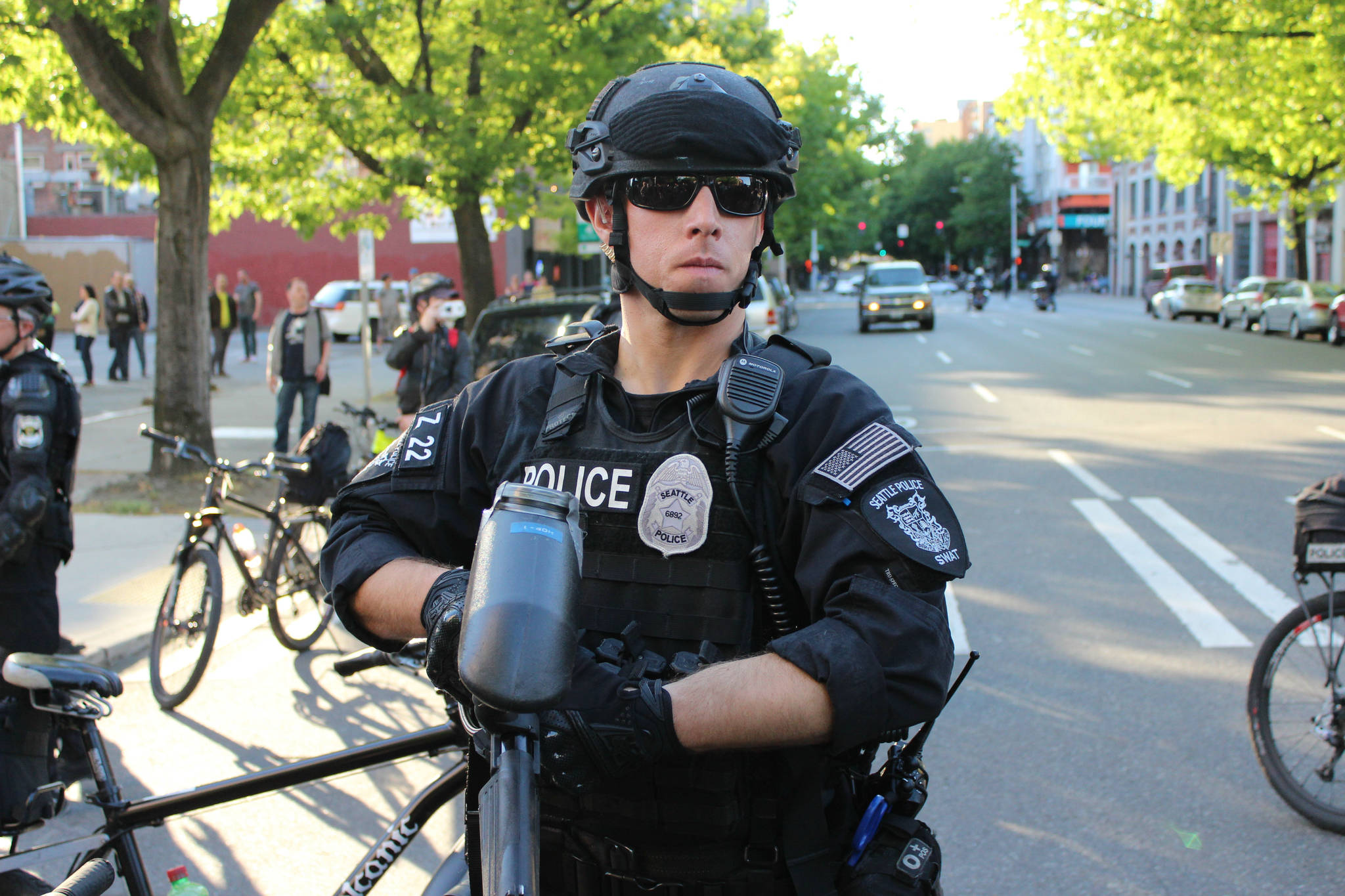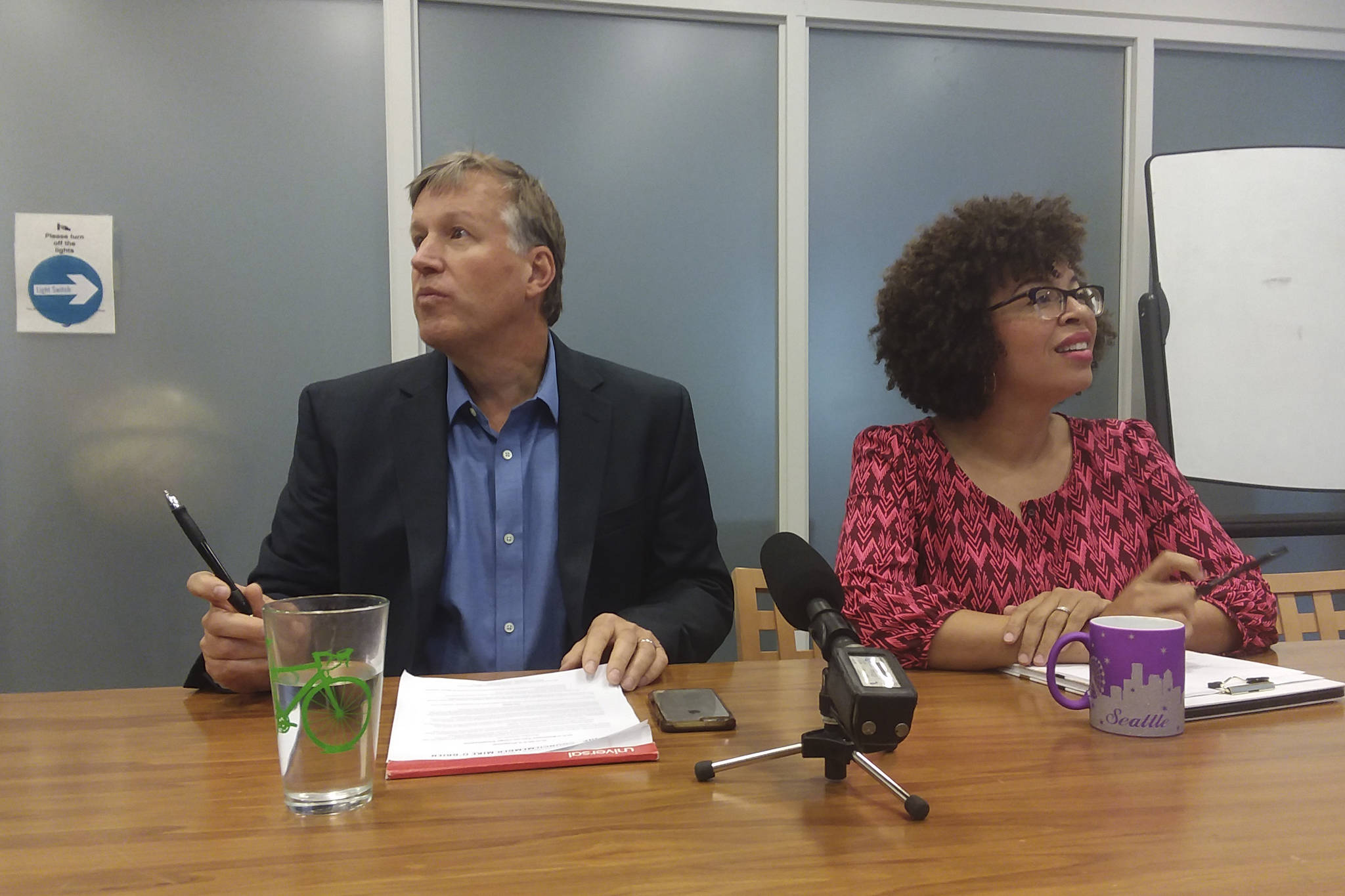In 2004, Vu Le found himself in a situation familiar to many recent college graduates. In possession of a newly minted degree in social work, he set out to find a job. Six fruitless months taught him that he needed more than a degree to land real employment; he needed relevant work experience. Le recalled the experience two years ago in his blog, Nonprofit With Balls, referring to it as “the experience paradox.” It’s an obstacle all too common as millennials graduate into a labor economy where a year of interning is a common prerequisite to finding a foothold on the career ladder.
“Frustrated and dejected, I secluded myself in my room (in my parents’ house), sending out my resume all day, coming out at night to raise my clenched fist to the dark skies and screaming ‘I may be inexperienced, but I am still a human being! A human being!!!’,” Le wrote. “Then I would eat some ramen and watch Spanish soap operas on Univision.”
Le eventually did find work at the Vietnamese Friendship Association, where he rose through the ranks and in 2008 became executive director. But he never forgot the paradoxical experience of having a graduate degree that was useless because it was unused. In his time at the VFA, Le came to realize that a similar problem faced grassroots nonprofits—what are professionally called Community Based Organizations or CBOs. CBOs in communities of color, he wrote, face a “capacity paradox” wherein “funders do not invest sufficient funds in our organizations to build capacity because we don’t have enough capacity” to support that investment.
“Capacity building” in this context means setting up human infrastructure—for example, networking between colleagues and organizations, launching long-term projects, and creating and normalizing workplace protocols. In Le’s words, capacity building means “ensuring that organizations have the tools and people they need to accomplish their mission.”
Both these problems—experience-building in young graduates and capacity-building in CBOs—were on Le’s mind when he left VFA in 2014. After a few months abroad, he returned and launched his own organization, Rainier Valley Corps, with the intent to address these twin problems, focusing on young professionals of color in his community and organizations led by people of color. His ambitious vision was to interrupt the vicious cycles that shut off communities of color from opportunity while also offering an alternative to Americorps, the $1 billion federal program focused on community service in poor areas. Whereas Americorps pays its volunteers extremely low wages, places them in substandard housing, and then watches its volunteers leave their location of service as quickly as they came, Le wanted to build a program that would encourage its participants to stay in the community, one that could foster the future leaders of South Seattle.
Le had actually started planning his new organization by inviting community leaders to a series of informal coffee chats. These meetings led to the creation of a 17-member steering committee, says Trang Dang Tu, a consultant who authored a 2013 road map for how RVC was going to work. “Mainly [my work] was picking people’s brains, asking if there was a need, what the potential might be, how it could work,” says Tu. “I don’t remember a single person saying [more nonprofit capacity] wasn’t a need. That was really compelling.”
Tu’s road map defines three broad goals: empowering refugee and immigrant communities in decisions about their community; identifying and meeting community needs; and filling the “leadership bench” within those communities with experienced organizers. The plan was to accomplish these goals by recruiting youth of color as RVC fellows, training them, and sending them to work with immigrants, refugees, and other communities of color at small, local nonprofits with annual budgets of no more than half a million dollars. With that plan in hand, RVC managed to raise funds from the Gates Foundation, United Way, Boeing, and the City of Seattle that would allow it to operate on a budget of about $500,000 per year. Last September, the first batch of 10 participants began their fellowships. Their overriding goal? Build organizational capacity.
It’s too early to definitively rule on whether RVC works as advertised. The program’s first year is almost over, but fellowships are designed to last two years and the entire pilot project is intended to take seven years in total.
“Right now [our fellow is] developing our media strategy with young leaders” as part of a campaign for green careers targeted at youth of color, says Jill Mangaliman, executive director of environmental justice CBO Got Green. That fellow, Marion Romero, rhapsodized about the experience in a recent blogpost. “Got Green has taught me so much about the importance of alliances, connection, and overall being present when the community needs you,” Romero wrote.
Her boss seems happy. “The dream is to bring her on as permanent staff,” says Mangaliman. “She’s definitely not just picking up work. She’s leading work.”
Since 1961, the path for people who want to do good in the world—perhaps while padding their resume—has gone through the Peace Corps. Launched by the Kennedy administration, the program operates by dropping college graduates into faraway lands for a little more than two years. Americorps—a descendant of both the New Deal’s Civilian Conservation Corps and Lyndon Johnson’s 1965 Volunteers in Service to America (VISTA) program—does the same thing, but for a year or less, with host organizations in poor American communities and without requiring a bachelor’s. Both programs place volunteers with local host agencies through whom they, for example, teach classes, build houses, and sit slack-jawed through interminable PowerPoint lectures, always while living in and learning about poor, often unfamiliar communities.
It’s difficult to argue against the social good that these programs bring. Yet there are problems. In both programs, most volunteers leave for greener pastures after their year or two of service, generally not developing into leaders of the local nonprofit scene. As a result, the host agencies can turn into a kind of halfway house for well-intentioned but often out-of-touch volunteers.
The other problem with conventional service models like Americorps is money, or rather its absence. It’s no secret that social programs are underfunded in the U.S., and volunteer service programs are no exception. For example, the Peace Corps’ entire $410 million budget is smaller than the portion of the U.S. military budget dedicated to marching bands. Americorps has a $1 billion annual budget, more than twice that of the Peace Corps but still less than 0.2 percent of our country’s enormous military budget.
This kind of sparse budgeting forces agency directors to stretch their dollars as far as they can. As a consequence, living stipends in both corps are slim—well below the minimum wage. Peace Corps argues this is appropriate for volunteers who live and work in very poor communities. Yet this kind of low-pay service is tougher to swing for Americorps volunteers, who are placed in locales throughout the United States. It is especially difficult for those depending entirely on the stipend to live and who may also be subsidizing relatives—a group that, thanks to the correlation between poverty and certain ethnic groups in the U.S., disproportionately affects African Americans and other young leaders of color. Thus the very people who would most benefit from the networking, skills, and resume fodder of a year or two of public service are the least able to take advantage of it.
These are the pitfalls that Le intends to avoid with RVC. In part, he is hoping to draft more people of color into his effort by focusing on their communities, but he also understands the economic realities at play. And so RVC provides its fellows with a salary of $23,400, which works out to only $11.70 per hour, but is nearly double that of Americorps. (UPDATE: RVC says they’re raising it to $15 per hour in September.) It’s not much, but the pay creates more opportunity for local people of color who have the potential to become a new generation of community leaders.
Le says that RVC was partially inspired by another generation of community leaders, pointing to a 1970s quartet of Seattle activists known as the Four Amigos. It was an impressive lineup: Bernie Whitebear, who helped organize the occupation of military land that ultimately led to the creation of Discovery Park; Bob Santos, the longtime activist whom The Seattle Times called “the unofficial mayor of Chinatown”; Robert Maestas, who headed El Centro de la Raza; and Larry Gossett, the county councilmember who got his jurisdiction rededicated in honor of Dr. Martin Luther King, Jr. (rather than the 13th U.S. vice-president, W.R.D. King).
These guys weren’t teddy bears. Santos once bullied a bank into giving him the loan he’d asked for plus half again with threats of pickets and mass account withdrawals. Gossett was arrested and jailed as a student protester.
All four activists were effective by straddling the line between working within the system for reform and working outside of the system, against it.
Le is hoping to walk a similar line with his program, preaching radical ideals about racial equity while functioning entirely within the arena of conventional nonprofit management and administration. “[The Four Amigos] were really formidable when they worked together,” observes Le. His hope is that RVC will help to “form the next generation of 100 amigos and amigas … because that’s the only way we can fight off injustice and inequity in our community.”
Nathan Thomas is a tall, thin, delicate black man whose face is hidden behind a full beard and glasses. A writer and former teacher, the New York City native received a bachelor’s in English from Pacific Lutheran University before joining RVC last year. He remembers hearing about the program while volunteering at a foster child center. He was commiserating with a colleague. “We were chatting about what I had been doing,” he recalls. “I had just gotten to Seattle. It was the tail end of the downturn of the economy. I wasn’t able to get a decent job for two years. And out of rage at a system that made me but wasn’t employing me, I decided to give my labor away for free.
“After hearing me talk for, like, three minutes, she was like, ‘Have you heard of Rainier Valley Corps? I think you should do it,’ ” says Thomas. “And I hadn’t. So I looked it up, and then I did it.”
After receiving training from RVC staff, Thomas was placed with the Rainier Beach Action Coalition (RBAC), a longtime community-empowerment organization created last year through the merger of two longstanding CBOs, the Rainier Beach Community Empowerment Coalition and Rainier Beach Moving Forward (which began as a Neighborhood Advisory Committee for the city). According to its website, RBAC takes “a holistic approach to neighborhood change and a commitment to building ‘intangibles’ such as community and social capital.”
Like all RVC fellows, Thomas’ job description is focused on increasing organizational capacity. That means shifting groups like RBAC from a survival mind-set into an investment mind-set—not an easy task, he says, for CBOs that have survived on shoestring budgets and skeletal staff for years and years. It’s difficult to make generalizations about a fellow’s average workday, says Thomas, because of how varied an individual’s duties can become, but tasks can include grant writing, interfacing with other organizations, advocating at City Council meetings, administrative work, answering phones, program evaluation, data gathering, creating surveys, and organizing protests or demonstrations.
“I think we need more things like RVC,” says Thomas. “We need more places that will dump resources into communities of color, into underserved communities, minority and marginalized communities.” This might sound like self-serving hype from a beneficiary of the program, but the truth is that Thomas may be at the end of his time in RVC, having recently been disinvited by his host agency. RBAC chair Gregory Davis says this is because Thomas and the organization had different visions. “As an organization, we’ve got some internal elements to bring to closure, such as closing the merger [between RBMF and RBCEC] and partnership development,” he says. Davis says he supports RVC and hopes to host another fellow in the future.
Le says one lesson he’s learned from RVC’s first year is that host CBOs can’t always be counted on to adequately buttress their fellows. “Sometimes the [host agencies] are so busy that it’s hard for them to provide the supervision and support that fellows need to succeed,” he says. Another lesson: RVC needs to better prepare them for the disorientation that can greet them at their host agency.
“It can be very jarring to be in a situation where there’s no systems in place yet and they’re expected to build systems, but at the same time navigate community dynamics,” says Le. For example, he adds, “the cultures that we have to work with are different. No one teaches us about how to work with elders, or how to work with a community that has gone through war and immigration or diaspora. How do you build that?”—how then, he asks, can a newcomer from RVC be expected to walk in and convince those elders to let her reconfigure the entire work culture of that agency?
“RVC is a nice idea,” Thomas says bluntly, “but there are difficulties with moving into traditionally under-represented, marginalized, and under-resourced organizations. First of all, they’ve been working for a long time the way they’ve been working, and the ways they’ve been working are all about finding the loopholes in a system that’s not created for their well-being, and surviving despite that sort of environment. So trying to get those organizations to suddenly shift the way they do business is sometimes a lot to ask.”
cjaywork@seattleweekly.com
The online version of this article has been edited to correct the name of the VFA, the spelling of Americorps, and details of RVC fellows’ pay, and to reflect that RVC focuses on communities of color, not just immigrants and refugees.
